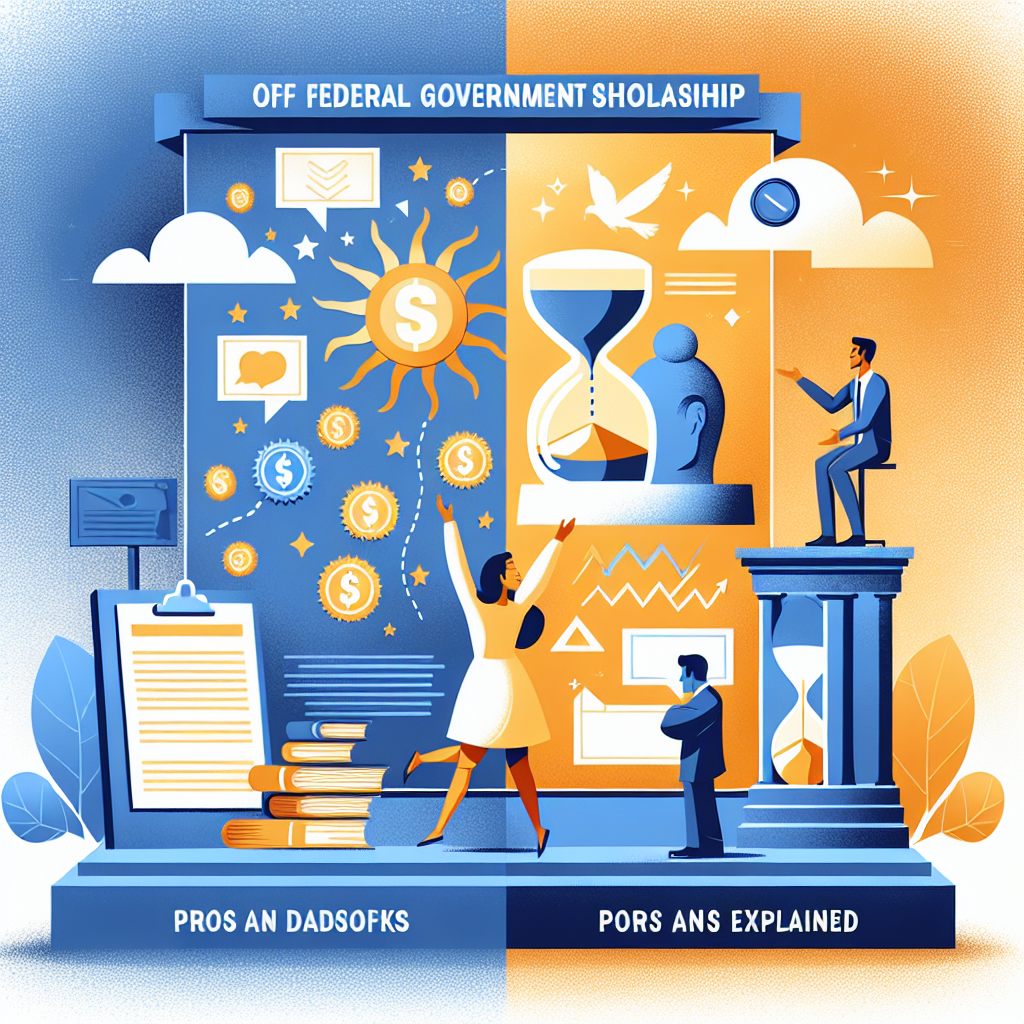The decision to apply for a Federal Government Scholarship: Pros and Cons Explained is an important step for students weighing public funding against private or institutional aid. Federal scholarships and grants can open doors to higher education by reducing tuition costs, offering predictable support, and often including protections that private awards do not. However, they also come with eligibility rules, potential reporting requirements, and limits on what they cover. This article breaks down the main advantages and disadvantages, practical considerations for applicants, and where to look for targeted opportunities such as creative-discipline awards.
Pros and Cons of Federal Scholarships
Understanding both sides helps you decide whether federal funding fits your educational plan. Below are the primary benefits and drawbacks to consider.
Major advantages
- Reliable funding: Federal scholarships and grants are typically funded by government budgets, making them less likely to disappear suddenly compared with smaller private awards.
- Low or no repayment: Many federal awards are grants rather than loans, meaning you usually don’t have to pay the money back if you meet the terms.
- Equity-oriented criteria: Federal aid often targets need-based support, minority access, and first-generation students, promoting broader access to higher education.
- Standardized application processes: Common forms and eligibility checks simplify applying across institutions, reducing duplicated paperwork.
- Integration with other federal programs: Pell Grants, federal work-study, and certain program-specific scholarships can be combined for a clearer overall aid package.
Key disadvantages
- Strict eligibility and reporting: Income thresholds, residency requirements, or satisfactory academic progress policies can limit access and require ongoing compliance.
- Coverage limitations: Federal awards may not cover full tuition, living expenses, or specialized program costs such as studio supplies and travel for art majors.
- Bureaucratic timing: Award notifications and disbursements can follow government calendars, which may not align with personal cashflow needs.
- Less flexibility for niche needs: Students in highly specialized fields or with unique personal circumstances may find private foundations offer more tailored awards.
How to evaluate whether federal aid is right for you
Deciding requires looking beyond the headline amount. Ask these practical questions:
- Does the award meaningfully reduce out-of-pocket costs when combined with institutional aid?
- Are there ongoing GPA or enrollment requirements that might be difficult to meet?
- Would accepting the award restrict your ability to pursue internships, part-time work, or other forms of aid?
- Does the award cover the unique expenses of your program—such as materials for studio art or fieldwork travel?
For students in creative programs, specialized support can be crucial. If you’re an art student exploring funding options that complement federal aid, check resources focused on artistic scholarships for tailored opportunities: scholarships for art students and creative grants guide.
Maximizing benefits and minimizing drawbacks
To get the most from federal awards while avoiding surprises, follow these steps:
- Complete all required applications accurately and on time; missing documents is a common reason offers are delayed or rescinded.
- Understand renewal rules—some awards renew automatically, others require reapplication or maintenance of specific academic standards.
- Coordinate federal aid with institutional scholarships and private grants to reduce loans and out-of-pocket expenses.
- Keep financial records and communications from awarding agencies; many disputes are resolved through timely documentation.
Where data helps decision-making
If you’re comparing outcomes—such as earnings by degree level or the value of completing a program—reliable labor and education statistics are useful. For national trends on education and earnings, consult authoritative research like the U.S. Bureau of Labor Statistics analysis of how education affects wages and employment opportunities: BLS Career Outlook: Education Pays.
Short checklist before accepting a federal scholarship
- Confirm the exact amount and timing of disbursements.
- Review renewal and progress requirements.
- Check whether the award limits other aid.
- Clarify which costs are covered (tuition, fees, living expenses, materials).
- Ask about appeals or exceptions if your circumstances change.
FAQ
Q: Can a federal scholarship be combined with institutional aid?
A: Yes—most federal scholarships and grants can be stacked with institutional awards, but the total cannot exceed the school’s cost of attendance. Always confirm with your financial aid office.
Q: Are federal scholarships only need-based?
A: No. While many federal grants are need-based, some federal scholarship programs reward merit, service commitments, or specific fields of study. Eligibility varies by program.
Q: What happens if I lose eligibility?
A: If you fail to meet renewal criteria, you typically lose the award but may appeal or reapply. Maintain documentation and communicate promptly with the awarding agency or your school’s financial aid office.



